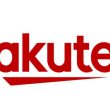NextWave picks up IPWireless
NextWave Wireless announced that it would acquire IPWireless, the maker of TD-CDMA technology used by public safety in New York City, for $25 million in cash and $75 million in stock. The total purchase price could reach $235 million by 2010 if IPWireless manages to achieve certain revenue milestones.
NextWave was born out of NextWave Telecom, which won several PCS licenses in the 1990s but subsequently filed for bankruptcy — and then won an extensive battle with the FCC to keep the licenses. (It subsequently sold the majority of those licenses.) Today, the company owns spectrum in the 2.3 GHz and 2.5 GHz bands and won spectrum from last summer’s Advanced Wireless Services auction. Yet, the company doesn’t characterize itself as a wireless operator.
“A service provider is not something we have aspirations to be, but we want to make spectrum available to those who want to enter the space and use our products and technologies,” said Roy Berger, NextWave’s executive vice president of marketing and communications. “The possibilities are very broad, and we’re having lots of discussions with a lot of people who are interested in enhancing existing wireless capabilities or, in many cases, companies who are not currently viewed as service providers and want to become service providers.”
NextWave has been amassing pieces to position itself as a provider of broadband products and technology. The company already has developed WiMAX chipsets through its NextWave Broadband subsidiary and is involved in the deployment of Wi-Fi networks as a result of its $13.3 million acquisition of Go Networks. It also is involved in providing mobile video to cell phones as a result of its acquisition of PacketVideo. The addition of IPWireless will enable the company to offer customers both WiMAX and TD-CDMA wireless broadband technologies.
TD-CDMA is a standardized next-generation network technology that originally was anticipated to be rolled out in 2008, essentially to provide overflow capacity when wideband-CDMA FDD (frequency division duplex) channels reached capacity. But IPWireless accelerated the development and commercialization of the technology, creating a non-line-of-sight, high-capacity system designed as a replacement for DSL systems. The IPWireless solution utilizes TD-CDMA and multiple input/multiple output technology to deliver data rates of 8 Mb/s to 10 Mb/s download and 1 Mb/s to 2 Mb/s upload in a typical download-intensive environment. The technology also is likely to be an important part of the long-term evolution (LTE) standard, the next phase of the commercial 3G UMTS standard.
The acquisition could be a boon for public safety, as NextWave now has the spectrum and technological capability desired by cities looking for both spectrum and wireless broadband solutions. Last October, New York City officials awarded a five-year, $500 million contract to global defense company Northrop Grumman to build a broadband wireless public-safety network based on TD-CDMA. New York City is utilizing 10 MHz of licensed spectrum in the 2.5 GHz band obtained via lease agreements with Sprint Nextel, the nation’s largest holder of 2.5 GHz spectrum, and Trans Video Communications, owned by the Roman Catholic Diocese of Brooklyn.
The technology also is deployed commercially in a handful of countries, including the Czech Republic, New Zealand, Germany, South Africa, Sweden and the U.S. Sprint Nextel had evaluated the technology, even investing $14 million in IPWireless, but ultimately went with WiMAX because it struggled with the lack of an ecosystem surrounding TD-CDMA.
Indeed, the $100 million price tag for IPWireless suggests the company’s market success was limited, noted Peter Jarich, analyst with Current Analysis. Since its inception, the company has raised about $200 million, meaning that few, if any, IPWireless investors will get a return on their investment, even if the sales price ultimately reaches $235 million.
“This is not a sign of a profitable or successful company,” he said. “Given the $600 million price tag for Flarion paid by Qualcomm, IPWireless’ price doesn’t even suggest substantial, differentiating intellectual property assets.”
Still, NextWave’s acquisition promises the resources necessary to drive into new markets, Jarich said. As a company, IPWireless spent 2006 trying to turn TD-CDMA into a broader success for data services, which requires substantial resources. NextWave has the cash reserves and can tap public markets for more. NextWave quietly went public earlier this year and raised $355 million last month.
NextWave’s Berger said it could very well be the public-safety community that lifts the TD-CDMA ecosystem — a critical piece for operator adoption.
“The New York network is a big network, and if we continue down that success path and are able to expand to other markets in both the U.S. and internationally, the size of the market is bound to attract more partners to enhance the ecosystem,” Berger said.
Indeed, Northrop Grumman has its sights on TD-CDMA. “Our view is that we picked the best technology for the requirements of the jurisdiction,” said Mark Adams, chief architect for Northrop Grumman. “From a performance perspective, TD-CDMA can hold its own in capacity, latency and average data rates on the street … TD-CDMA is certainly on our list.”
PUTTING THE PIECES TOGETHER
JUNE 1998: NextWave Telecom declares bankruptcy and fails to make its payments on spectrum won in 1996.
JANUARY 2000: The FCC declares that NextWave lost its rights to the licenses in 1998.
JANUARY 2001: In a reauctioning of the licenses, the FCC takes bids of $16 billion from several carriers.
JUNE 2001: The U.S. Court of Appeals for the District of Columbia Circuit rules that the FCC had no right to cancel NextWave’s licenses.
JANUARY 2003: The U.S. Supreme Court also sides with NextWave.
APRIL 2004: NextWave and FCC reach settlement, requiring NextWave to sell more than 70% of its remaining spectrum and to pay the FCC $1.6 billion in cash.
APRIL 2004: NextWave sells 34 PCS licenses to Cingular Wireless for $1.4 billion.
APRIL 2005: NextWave starts over, changes name to NextWave Wireless with the same leadership.
APRIL 2005: NextWave sells off 28 PCS licenses to Verizon Wireless for $3 billion.
SEPTEMBER 2005: NextWave acquires the majority stake in PacketVideo.
JANUARY 2006: NextWave obtains spectrum adequate to serve more than 50 million potential new customers.
FEBRUARY 2006: NextWave acquires WiMAX semiconductor company Cygnus.
JUNE 2006: NextWave acquires2.3 GHz licenses.
SEPTEMBER 2006: NextWave wins 154 licenses for $115.5 million during the AWS auction.
JANUARY: NextWave lists on NASDAQ; pays $13.3 million for muni Wi-Fi vendor Go Networks.
MARCH: NextWave raises $355 million in a private placement.
APRIL: NextWave acquires IPWireless.

















